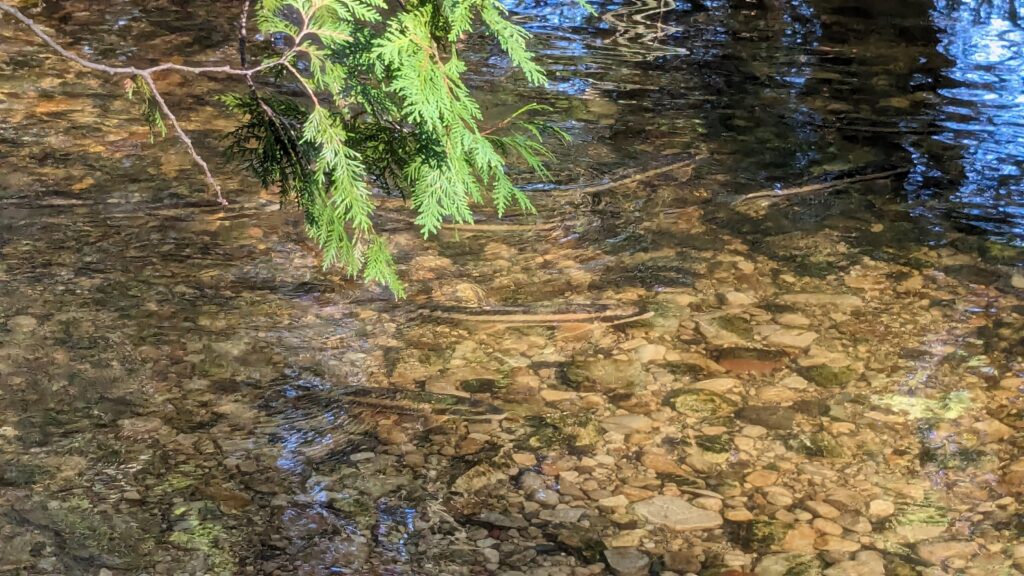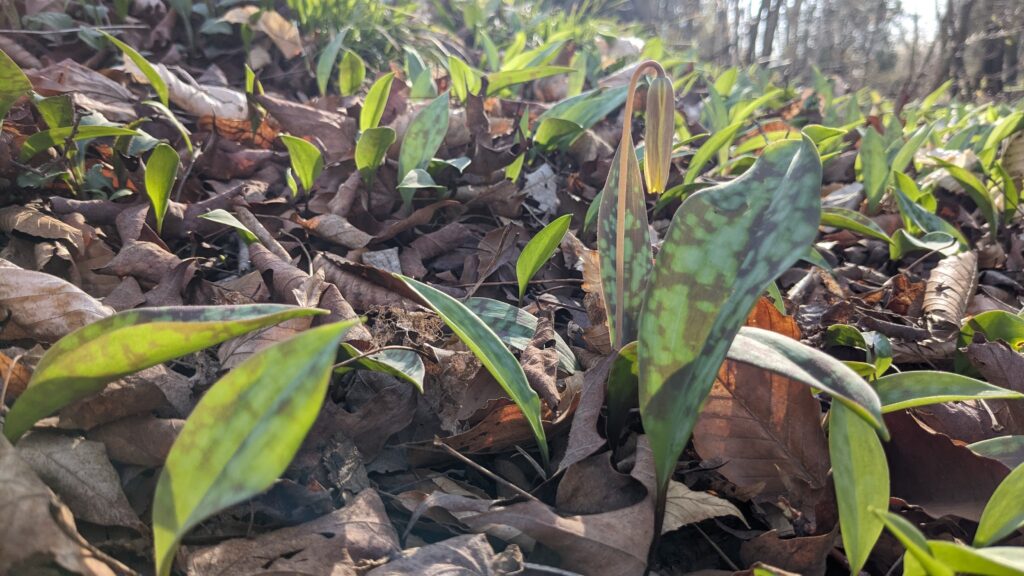
White suckers in Silver Creek. Image credit: Titus Seilheimer, Wisconsin Sea Grant
Spring is when that I head to the streambank most days and look for fish. And not just fish, I also follow the seasonal progression of spring and log those observations as part of the Great Lakes BioBlitz. I really look forward to slowing down and taking time to look at the daily changes. Although I’ve spent more than 20 years studying fish and wetlands, that work tends to be busier and more hectic with lots of travel between different sites. Both the Great Lakes Bioblitz and the sucker monitoring I do for the Shedd Aquarium take me to Silver Creek Park in Manitowoc first thing in the morning five days a week to look for fish and other animals.
It is also a time of sounds, from the seasonally evolving chorus of birds to the splash of fish in the stream. There are two distinct fish splash sounds right now: the vigorous splashing of a couple spawning suckers and the “ploink” splash of a surface-feeding steelhead trout. Suckers spawn in shallow water with a single female and several males. There is a lot of thrashing with fins and tails often breaking the surface. This year I’ve been alerted to the presence of suckers more than once by their splashing spawning activities. Thanks friends, I might have missed you otherwise.
The other sound is from the trout in Silver Creek—that cheerful little “ploink” splash of a feeding steelhead smolt. The creek is one of the stocking locations where the Wisconsin Department of Natural Resources plants two types of rainbow trout (also called “steelhead” because they run to the ocean/lake like salmon and get very silvery). The two types (strains) of steelhead are Ganaraska and Chambers Creek, both from Pacific drainages in the western United States. They are stocked as yearlings, and typically thousands of each type are released.

Trout lilies. Image credit: Titus Seilheimer, Wisconsin Sea Grant
You know when steelhead show up because they vigorously feed on the surface. They tend to sit in the deeper pools, facing upstream, swimming just enough to stay in place until they shoot to the surface to gulp down some unsuspecting bug. These stocked trout will head to Lake Michigan and grow big until they return to Silver Creek as adults to spawn. (You can see a pair of spawning steelhead in this video.) Steelhead are popular with anglers on the lake, but people can also catch them in the stream when they return to spawn—no boat required.
As a monitor for the Shedd Aquariums sucker monitoring program, I visit Silver Creek every day. Volunteers go to the same part of the stream and stand for 10 minutes looking for and then counting white suckers. Our monitoring station will contribute to a larger project that looks at suckers in Lake Michigan from Illinois to Door County and also on Lake Superior in Marquette, Michigan.
Water temperature is an important cue for suckers to know that it is time to move upstream from Lake Michigan to their spawning areas. This project will teach us more about how these cues might differ along a south to north gradient and be an important dataset in documenting the changes that climate disruption is causing to the natural world.
Coming out of winter, I value the time I spend watching the stream and looking for fish. I also get to watch the yellow trout lilies emerge and bloom, followed by the wild onions, mayapples and trillium. Sometimes there’s a muskrat or mink saying hello. Spring is a beautiful time to get outside and slowly watch the season!


